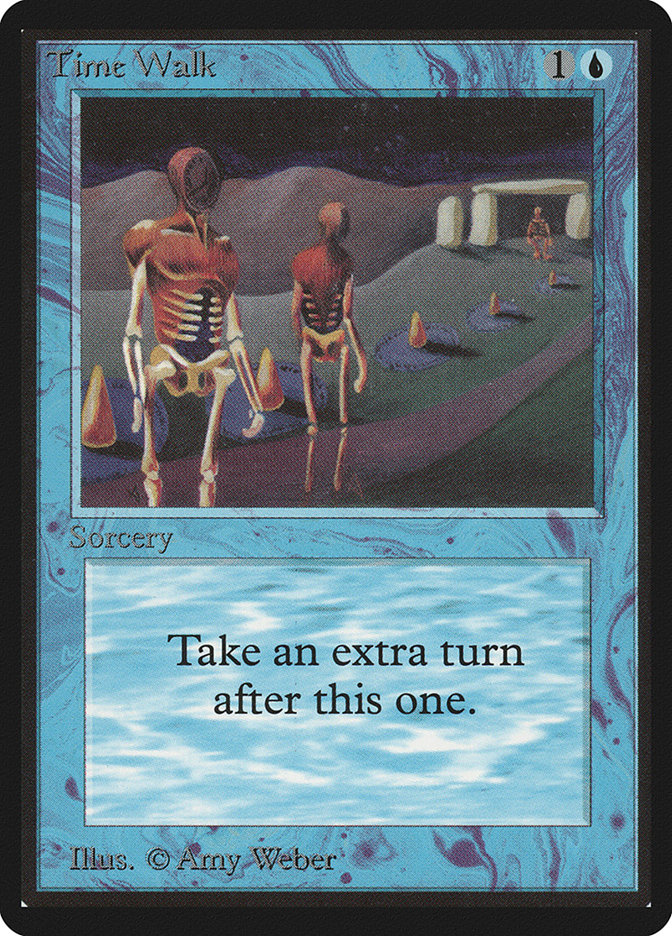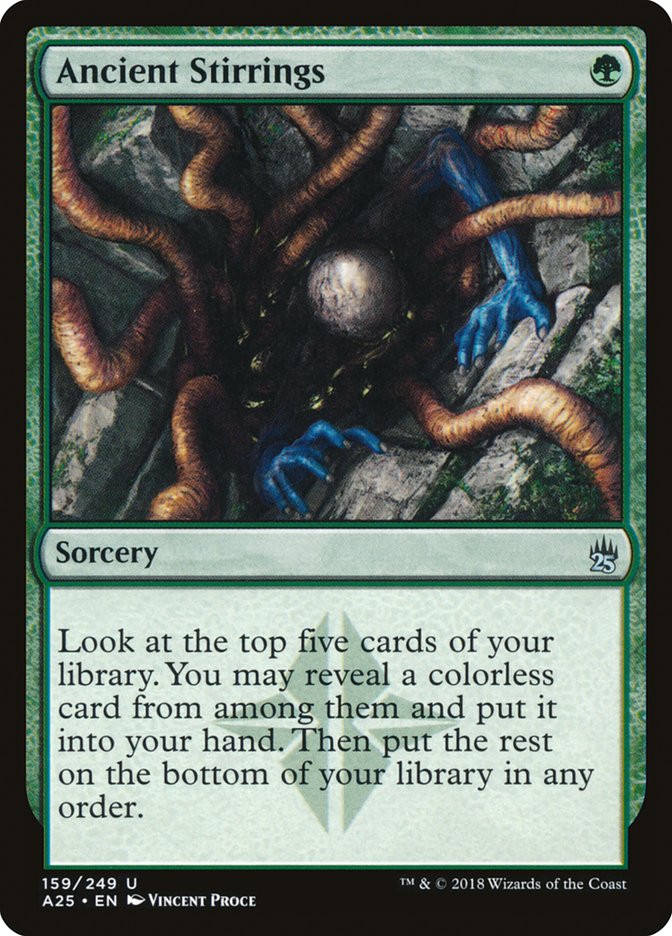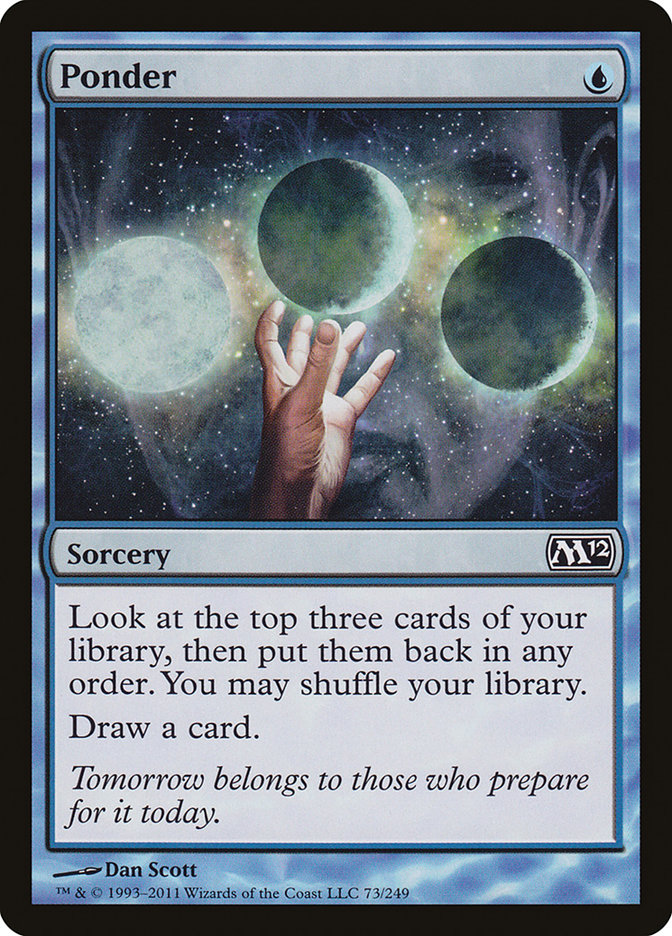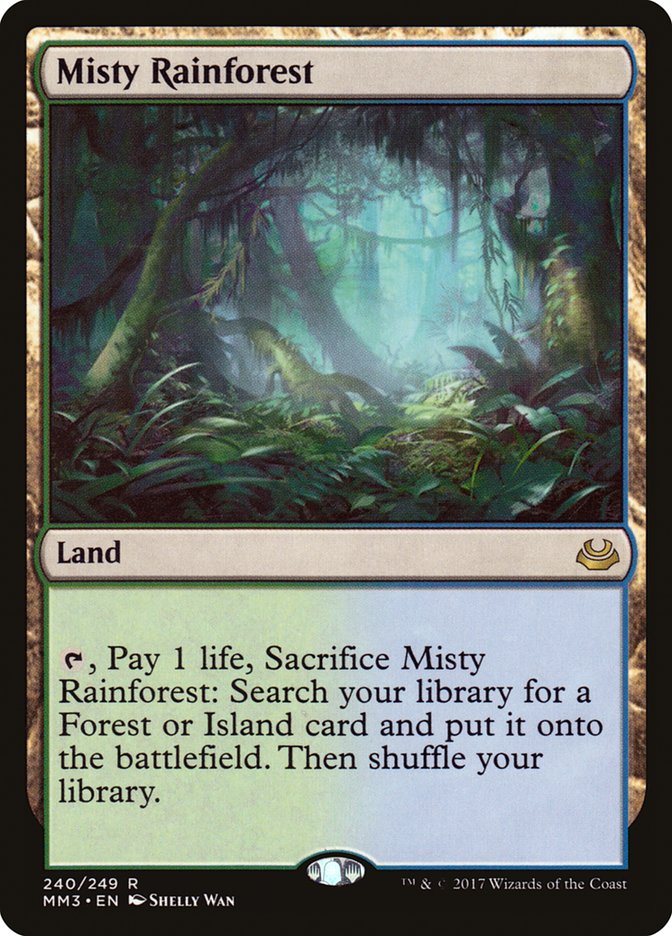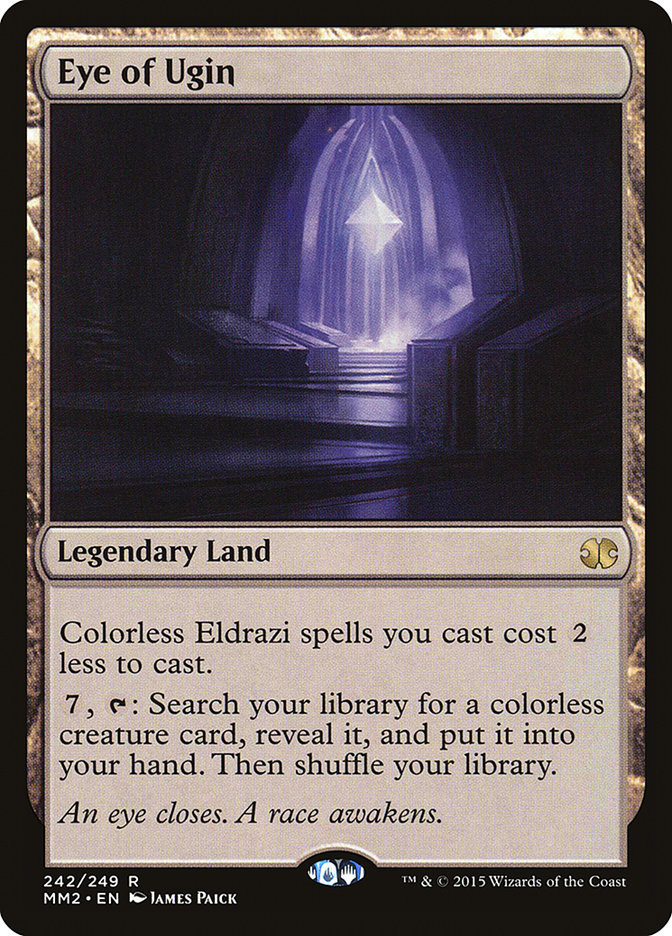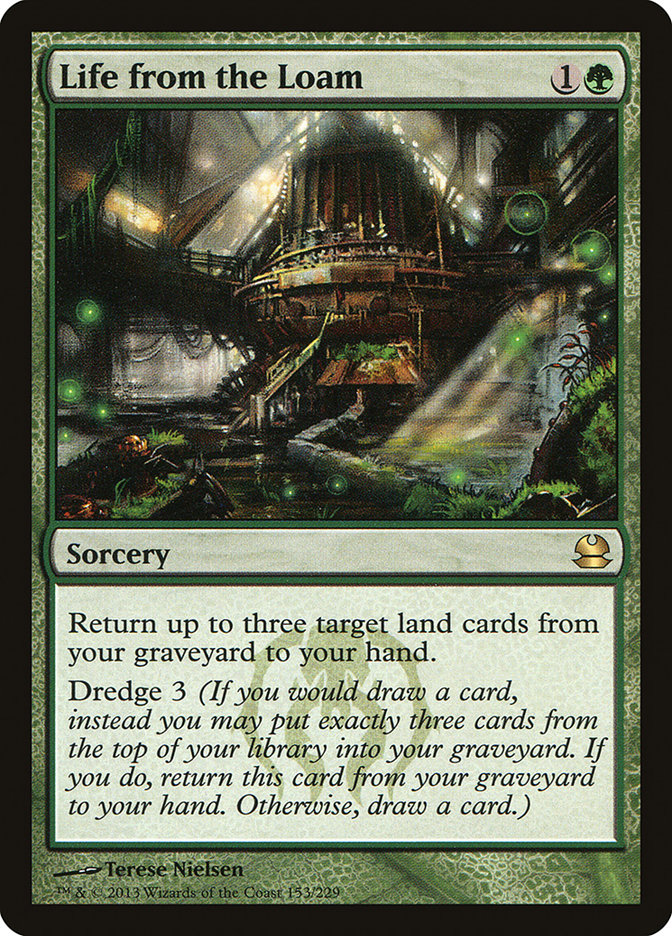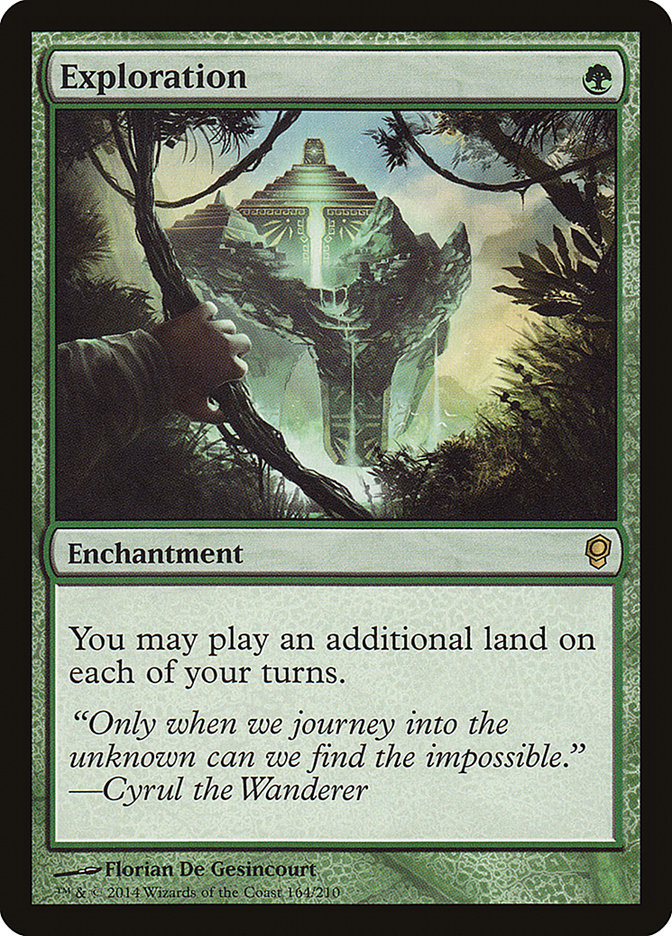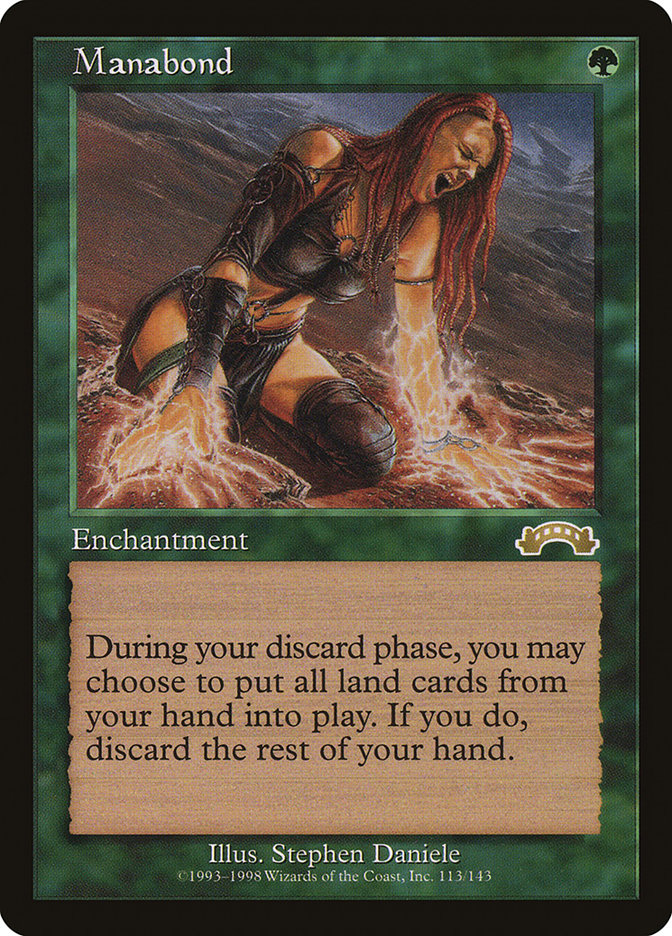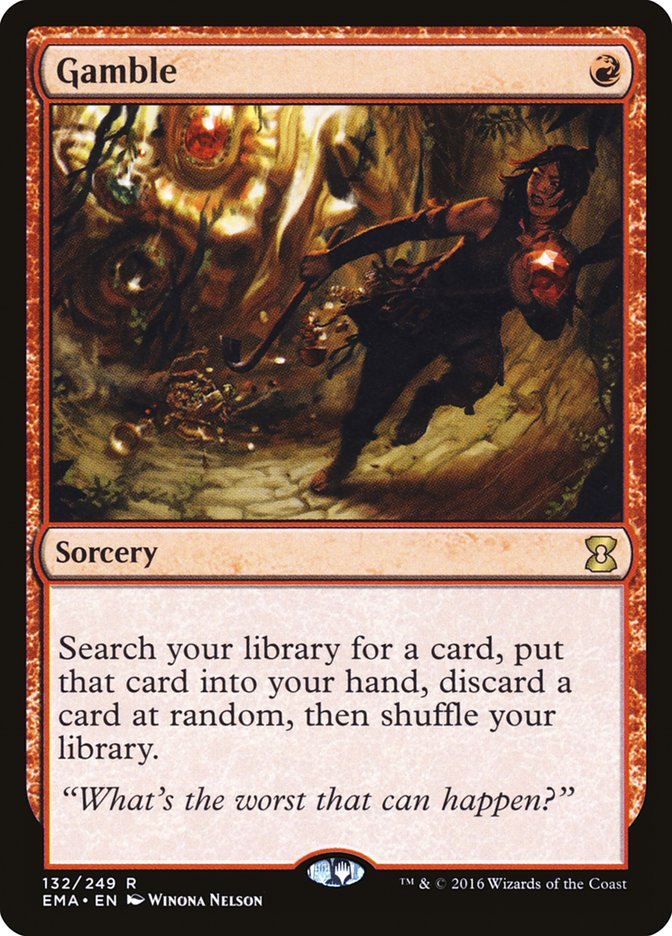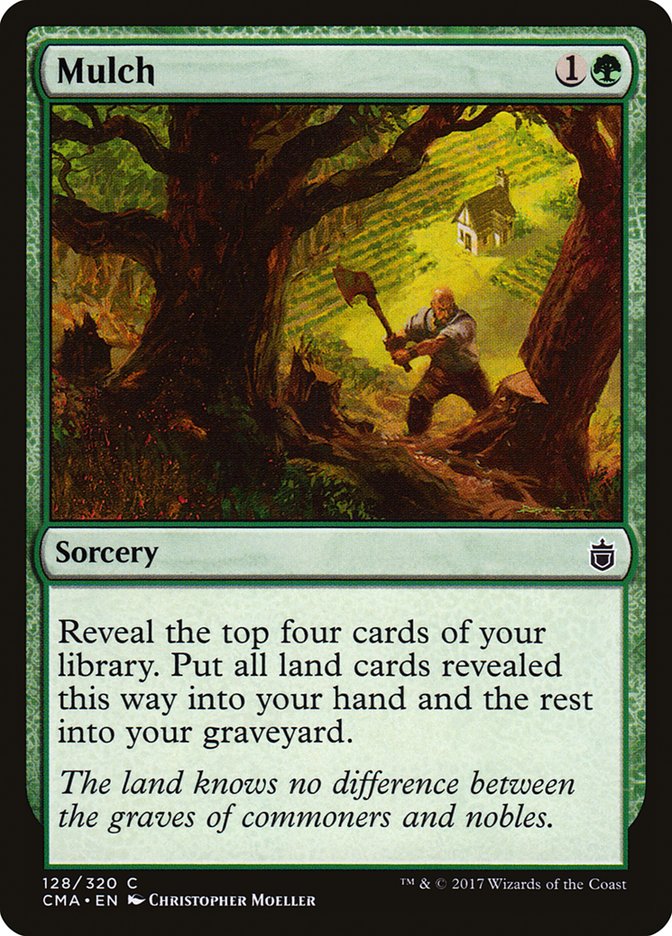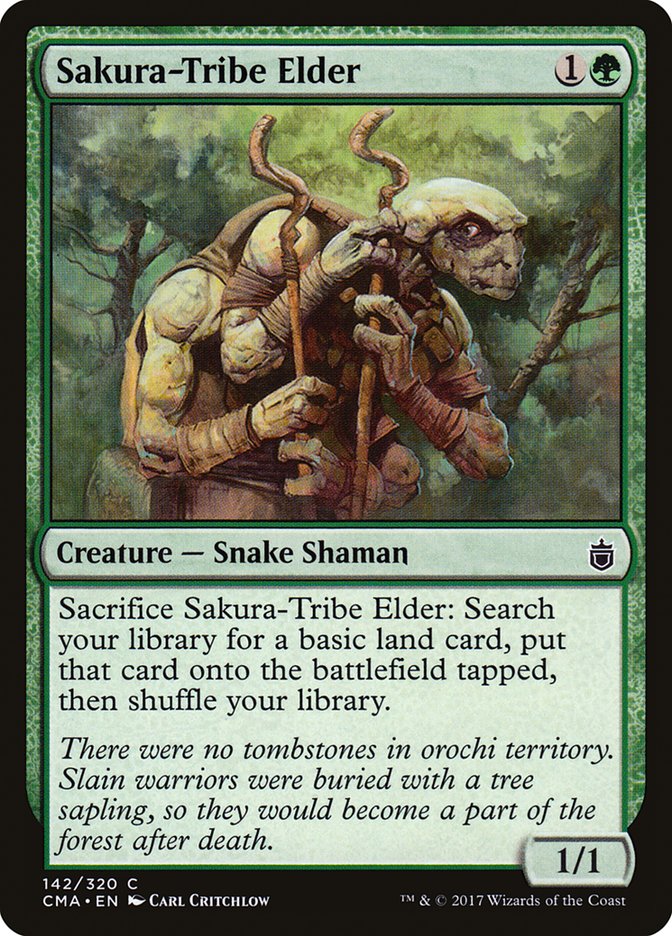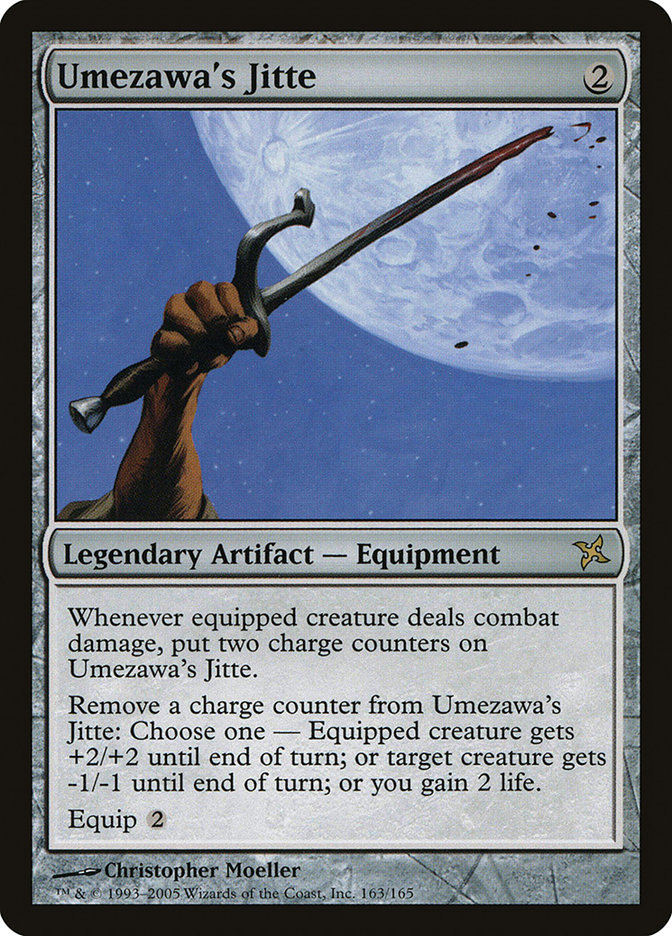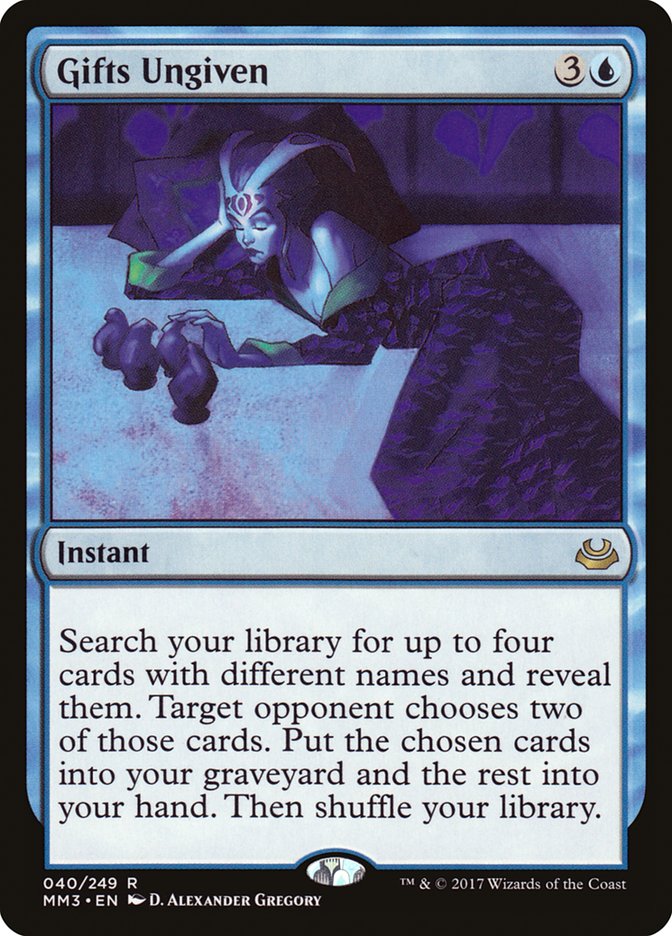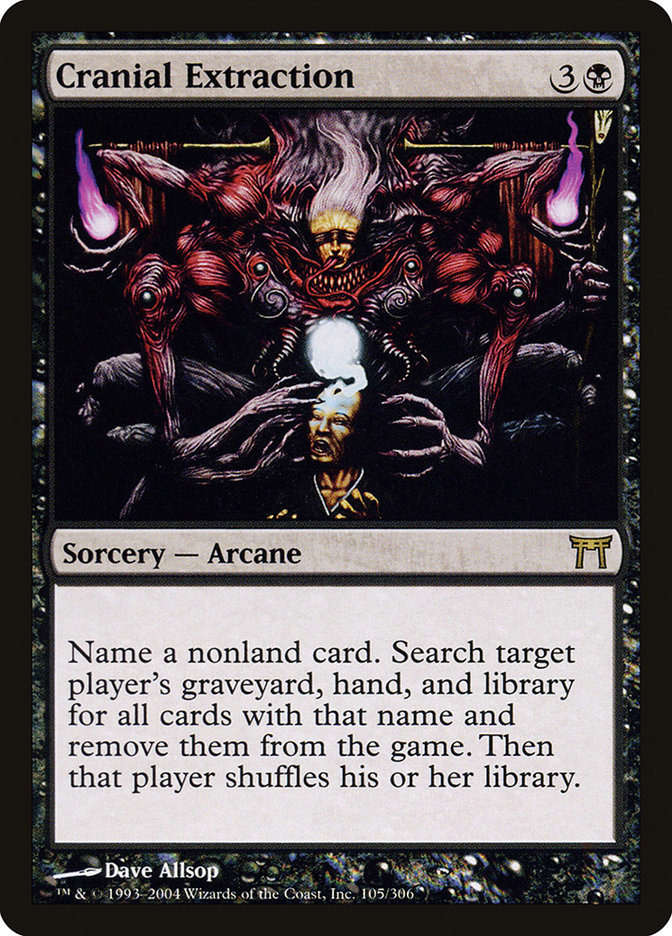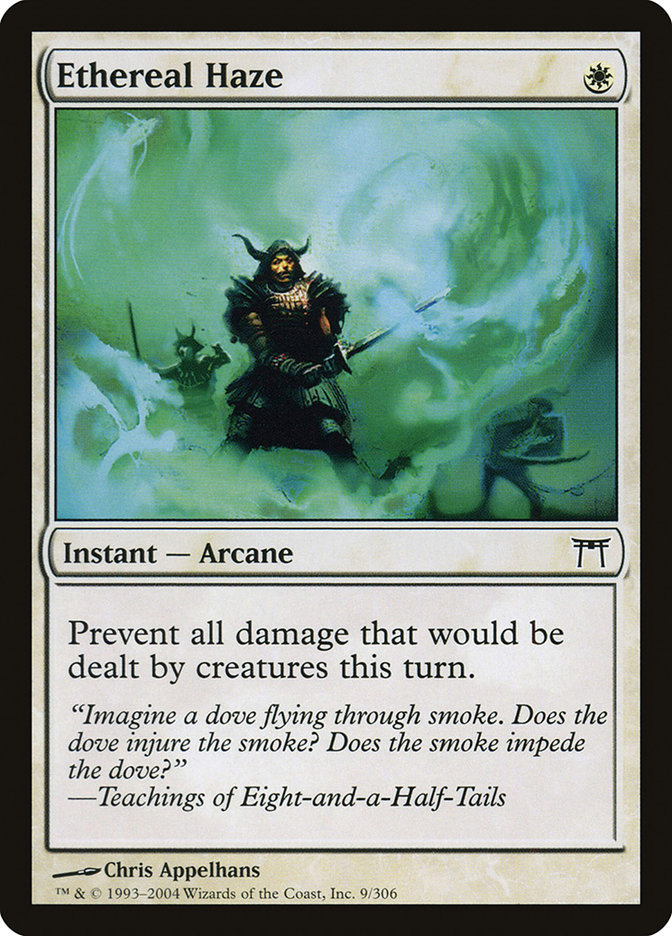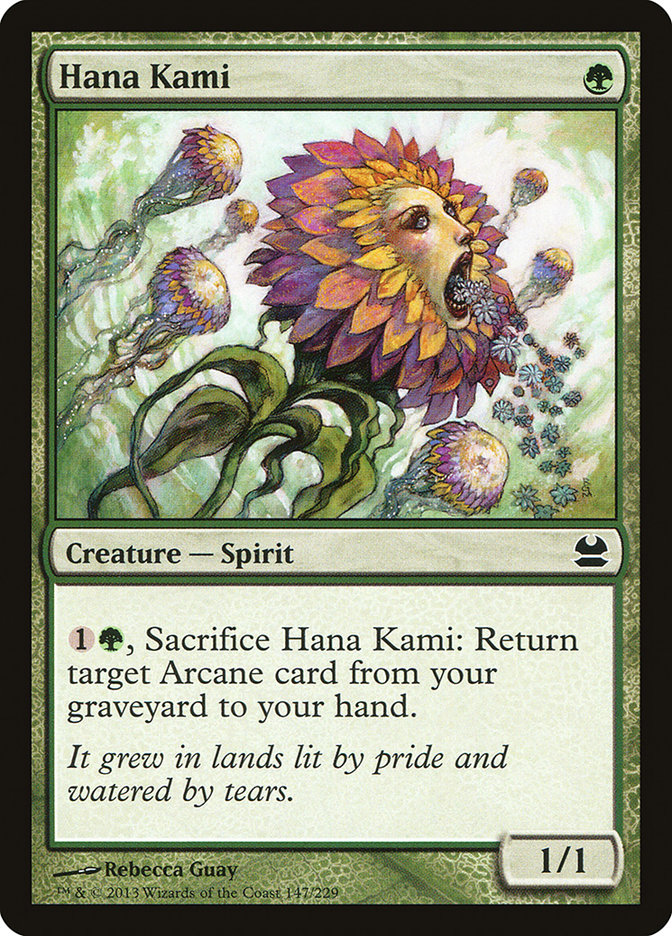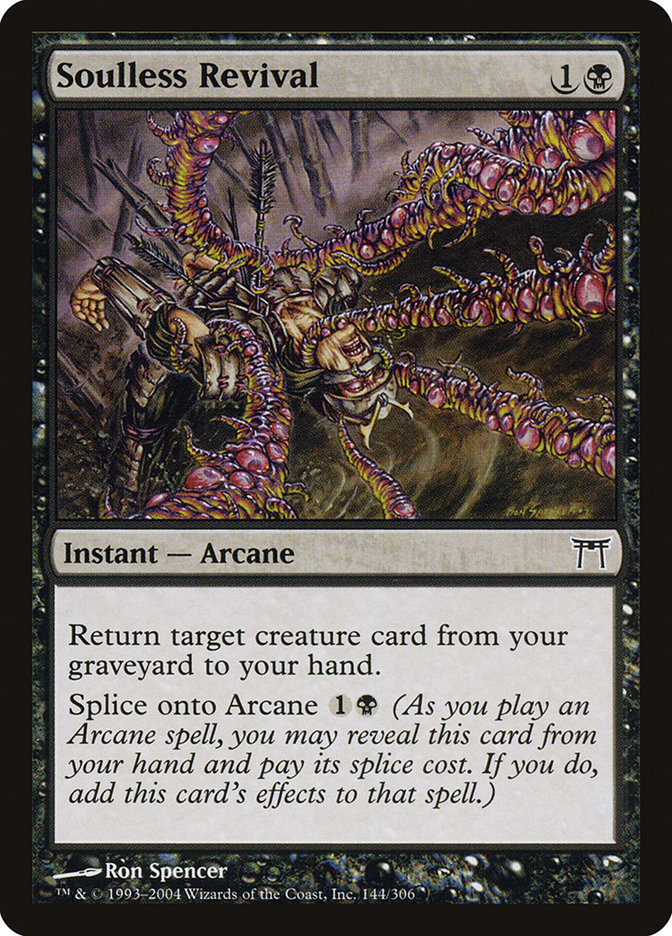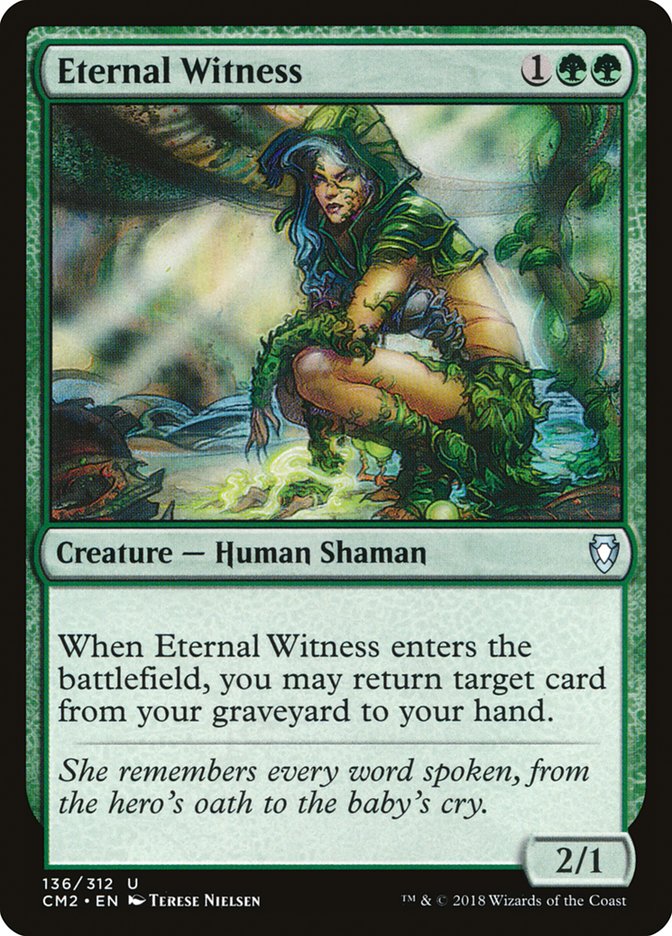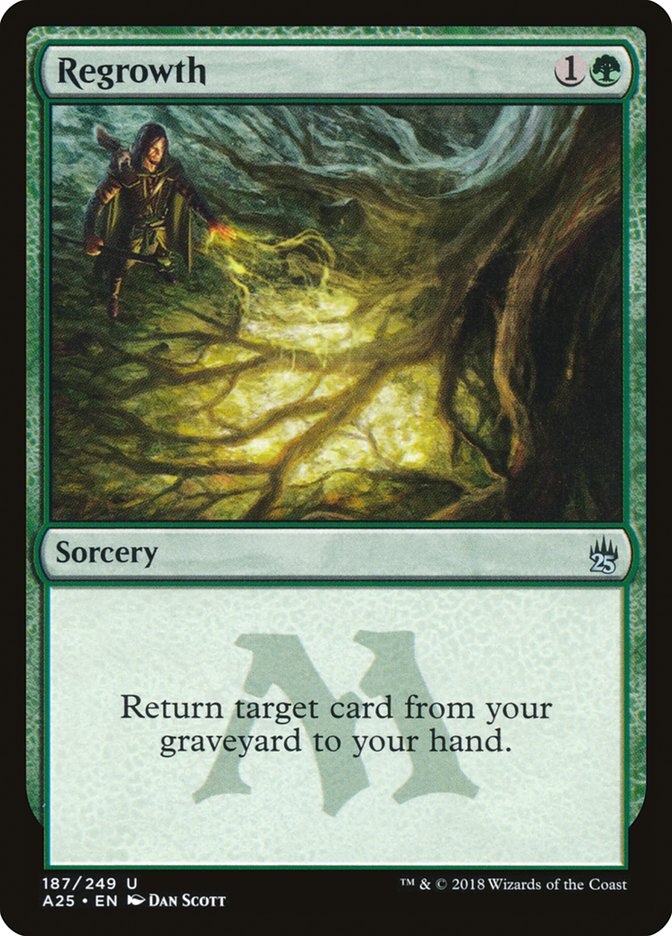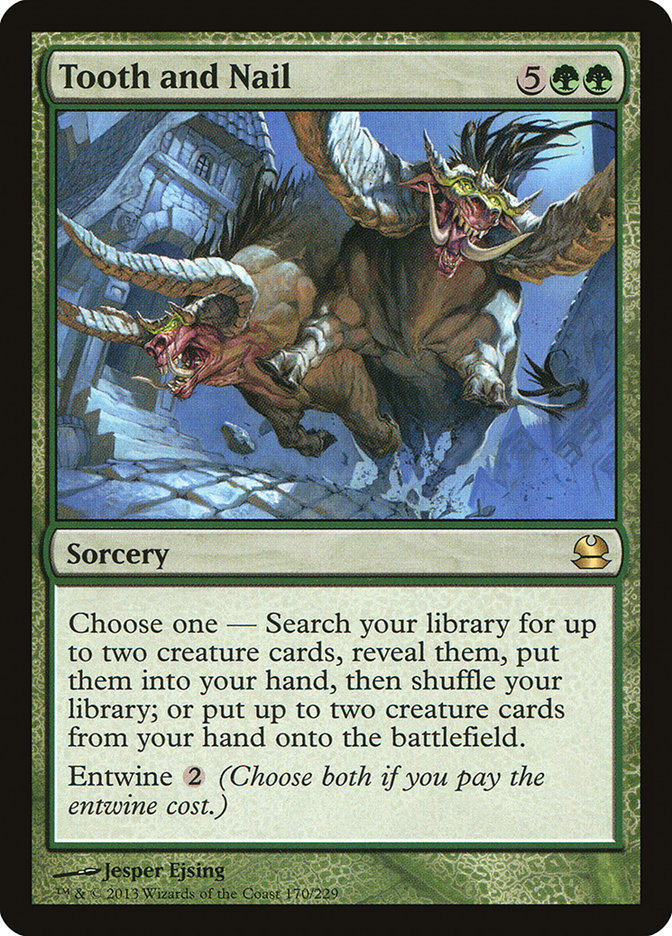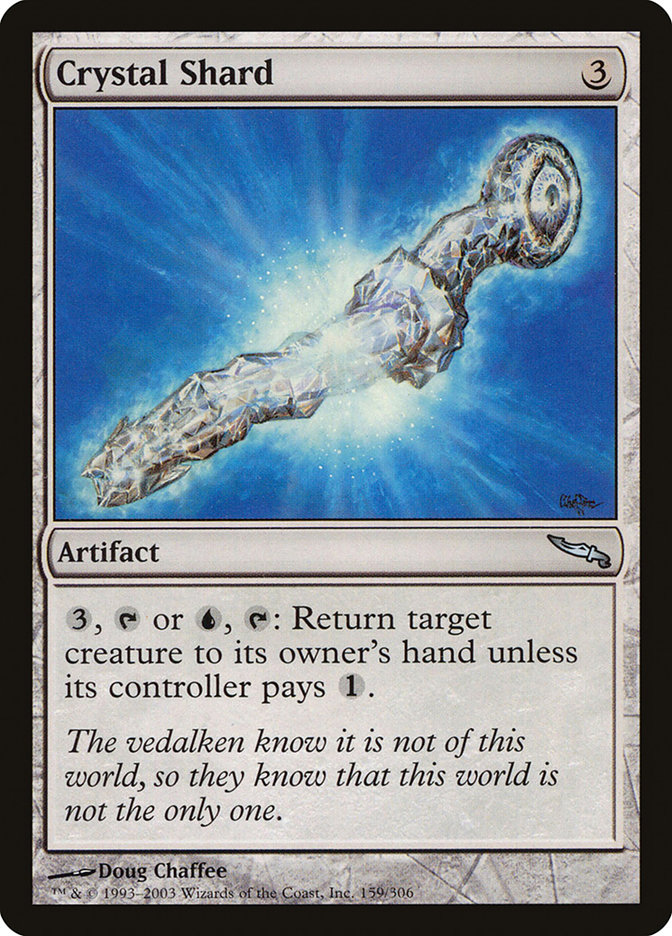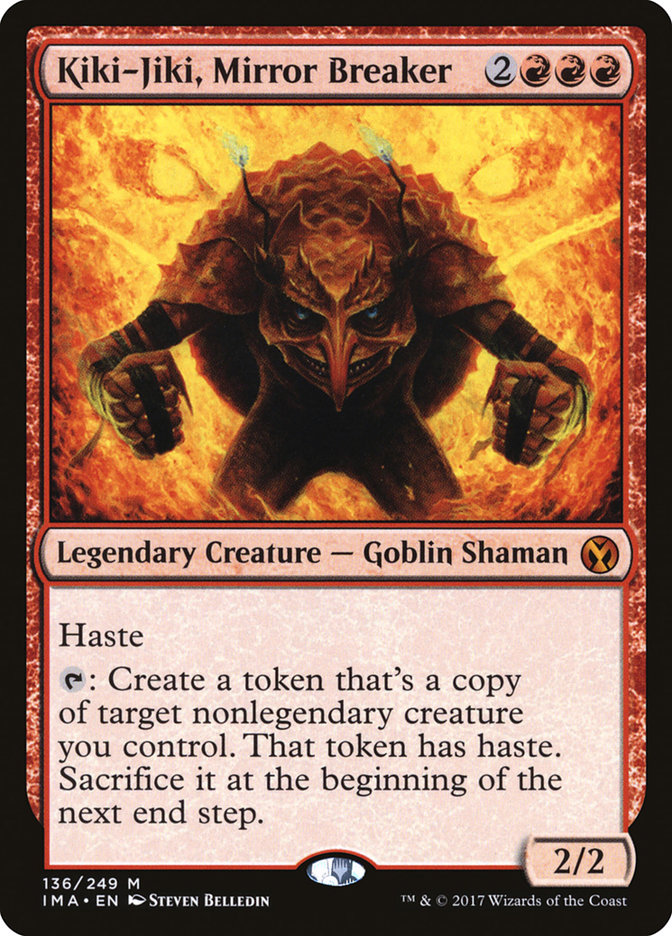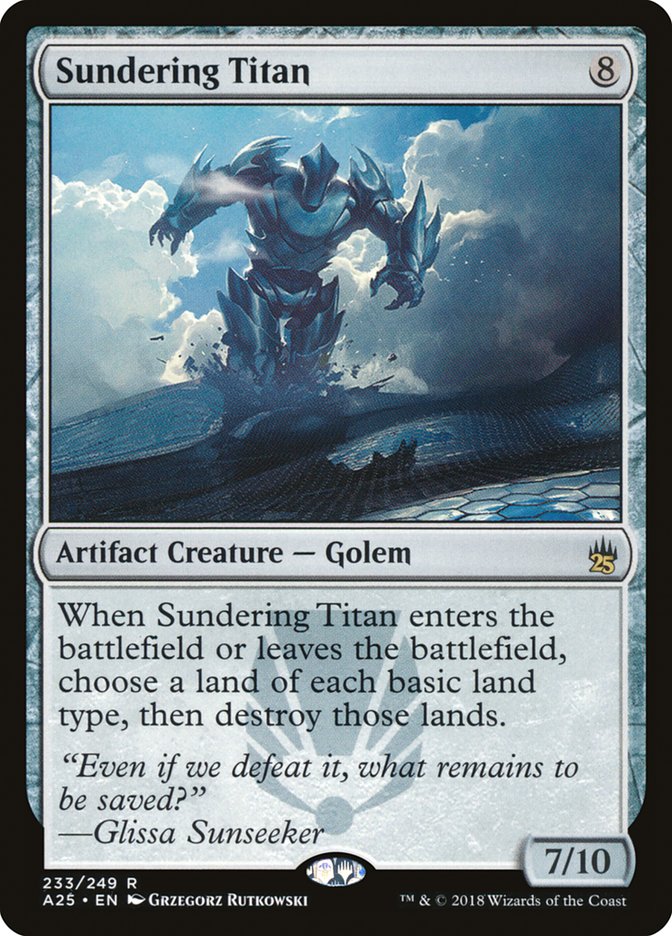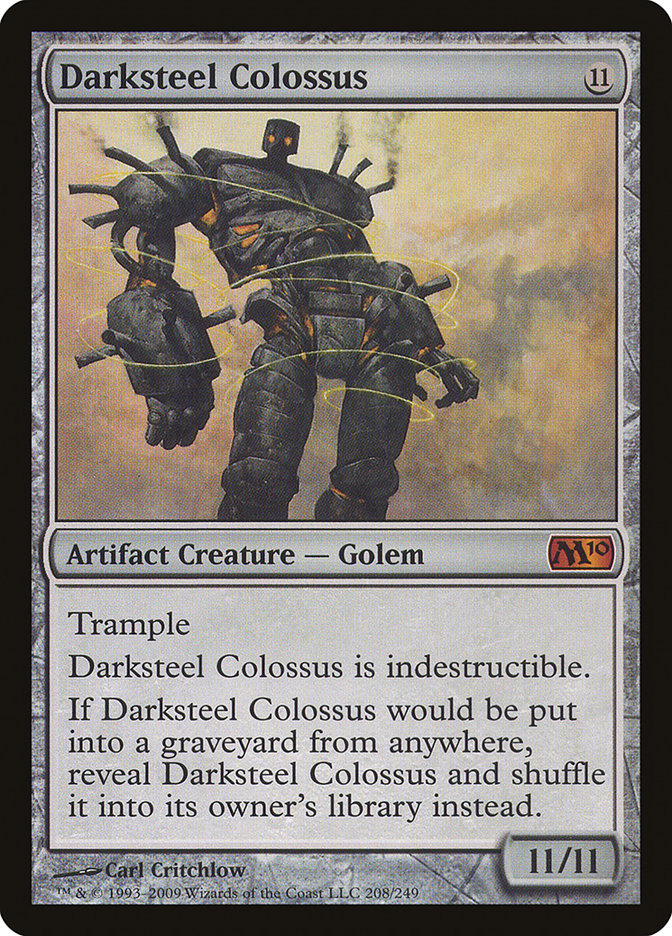25 years…
I guess time flies when you’re having fun.
A quarter of a century ago, Dr. Richard Garfield changed the world of gaming forever with a new kind of game featuring three revolutionary advancements:
- A collectible card game. Each player can play whichever cards they want, and the game is much bigger than all the cards in both players’ decks. Rarity helps provide consistency of experience early while ensuring novelty later.
- The resource engine. Allowing you to play one land a turn is a simple, subtle, and brilliant game engine, making turns dynamic from one another and creating a natural building of excitement, while providing incentive to players to advance the game.
- The color pie. Five colors divided philosophically, each with its own way of approaching problems, each with strengths and weaknesses, each with its own relationships with the others.
Magic: the Gathering’s design philosophy has evolved a great deal over the years, as well as which cards have been pushed the most (whether accidentally or intentionally). Today, there are nearly 16,000 unique Magic cards (to say nothing of the thousands of times some cards have been reprinted). There has been an extremely wide range of power level of cards, and while frequently a quarter of the cards in recent sets see competitive play in one format or another, today, I’d like to focus on the 99th percentile of power.
The Top 25
Today I’d like to embark on a journey into history, beginning an exploration of the Top 25 cards of each color. There have been over 125 Legacy-legal Magic sets, over the years, with something like 110 of them featuring some number of new cards. Roughly speaking, we’re talking about one card for every set; though obviously some sets have had more power cards than others.
Comparing the power level of cards from different eras is surprisingly tricky. After all, in what context should we evaluate the card’s power? Cards feature numbers and rules that create a variety of interactions with other cards in a format. What “matters” in Vintage is very different from what “matters” in Standard. If we only talk about what matters in Vintage, our list would miss out on much of the true power people have experienced with the cards. If we only focus on Standard, however, our list would feature cards meaningfully weaker than cards not on the list. That would really be a measure of contextual relevance.
Instead, I’m just gonna use a less-than-scientific approach of answering from the gut. I’m considering across formats, as well as how many theoretical formats I’d imagine the card being extremely powerful or overpowered in. I welcome feedback, whether you agree or disagree. I’ve seen a lot, but there are always far more perspectives than one person can see and I’m extremely interested in whatever there is to glean from other takes on the game’s history. To give each card the proper time and attention, I’ll be looking at five cards a day, starting with green.
Let’s go!
#25: Ancient Stirrings
There’s extremely fierce competition for the last few spots of each color’s list, which makes sense, given how the power of cards is sort of distributed like a pyramid. There are just more and more cards at each level of the pyramid.
That said, I think there’s a good case to be made for Ancient Stirrings. The card enjoyed immediate success finding Eldrazi and lands, and today is one of the best cards in Modern, thanks to its ability to find artifacts, too. It’s on the short list of cards most likely to be banned eventually, and it would be surprising to ever see Wizards of the Coast reprint it, at least at this power level. You’ve got to build your deck to really abuse it, but if your deck contains 48 artifacts / lands / other colorless cards such as Eldrazi, you’re seeing an average of four options per Ancient Stirrings. That’s more selection than Ponder plus a fetchland.
Ancient Stirrings first bust onto the scene in Mono-Green Eldrazi ramp strategies, but the printing of Battle for Zendikar introduced a revolutionary suite of colorless Eldrazi pushed to the max. Eldrazi Aggro dominated the Modern-format Pro Tour Battle for Zendikar at historical levels.
Eye of Ugin was quickly banned, but Eldrazi Aggro continued to shine, culminating in a World Championship title in the hands of Brian Braun-Duin. This is the Bant Eldrazi deck he used to take home the trophy, fueled by Ancient Stirrings:
Creatures (25)
- 4 Noble Hierarch
- 1 Spellskite
- 3 Drowner of Hope
- 2 Eldrazi Skyspawner
- 4 Eldrazi Displacer
- 4 Reality Smasher
- 4 Thought-Knot Seer
- 3 Matter Reshaper
Lands (24)
Spells (11)

With a maindeck featuring just Ancient Stirrings, Path to Exile, Dismember, and Noble Hierarch for non-hits, three-quarters of BBD’s deck could be found by Ancient Stirrings, smoothing out draws by finding lands when needed (especially Eldrazi Temple) or threats when he didn’t. Eldrazi Temple already means we’re getting Reality Smasher, Thought-Knot Seer, and Matter Reshaper a mana below retail, and the prospect of spreading out that cost is often worth half a mana or more itself (since you can Stirrings whenever is convenient).
#24: Life from the Loam
Life from the Loam is definitely a tough one to evaluate in a vacuum. After all, would it even appear on the list if not for fetchlands and cycling lands? However, there are fetchlands and cycling lands, and as such, Life from the Loam has often been something like a two-mana draw-three with selection…and the ability to rebuy it over and over.
The most powerful dredge effect when used “as intended,” Life from the Loam has a long and rich history of dominating counterspells, powering late-game inevitability, and pushing certain nonbasic lands to such a degree that it has warped multiple formats. This next deck is only one example of the numerous archetypes made possible solely because of Life from the Loam; however, it is perhaps the most extreme use of the card to achieve high-level success.
Lands (42)
Spells (18)
Sideboard

Trepanier’s list features an ungodly 42 lands in order to get the absolute most it possibly can out of Life from the Loam, Exploration, and Manabond.
Exploration and Manabond allow you to leverage these extreme quantities of lands, if only you can draw enough of them, and Life from the Loam is the key to doing so. The only other spells in the maindeck are mainly used to find it.
Gamble’s primary target is Life from the Loam, since randomly discarding it doesn’t actually hurt you but can actually be even better sometimes. It can also find miscellaneous bullets, such as The Tabernacle at Pendrell Vale, if you already have Loam.
While Mulch was eventually phased out with the printing of enough other powerful cards to give us better options, it was used as both a quasi-Life from the Loam to get us started and a way to dig to Life from the Loam itself, since flipping a Loam to it means we’ve got access to one for our next draw.
Whenever we encounter a card that singlehandedly spawns a new archetype that completely flips the basic rules of the game on its head…
…and wins…
…well, that’s a good time to sit up and take notice.
#23: Sakura-Tribe Elder
Sakura-Tribe Elder is probably a controversial inclusion, appearing much fairer than some cards that didn’t make the list. However, the card has proven itself a cross-format staple, is better than they’d normally do (by a clear margin), and was an absolutely defining card in Standard and Block Constructed.
Sakura-Tribe Elder has enjoyed success in a wide variety of decks, but one of the wildest was the brainchild of American Magic legend, Mark Herberholz, who piloted the following monstrosity to a Top 8 finish at Pro Tour San Diego 2005, the Betrayers of Kamigawa Pro Tour.
Creatures (7)
Lands (24)
Spells (29)

Mark’s deck is a case study in metagaming for highly inbred metagames. In this format, almost every top strategy revolved around either Umezawa’s Jitte or Gifts Ungiven.
Sakura-Tribe Elder could block a creature with a Jitte and sacrifice before damage to prevent the gaining of counters; but it was even more important for the Cranial Extraction battles that often decided the Gifts semi-mirror matches. Cranial Extraction on the other person’s Cranial Extractions ensured late-game inevitability.
The Gifts decks were generally better at defending than presenting any sort of offense, and decks like Mark’s could actually achieve a soft lock in the form of Ethereal Haze plus Hana Kami plus Soulless Revival.
Once assembled, Mark could cast Ethereal Haze every turn, splicing Soulless Revival onto it, bringing back the Hana Kami he would use to bring back the Ethereal Haze. What’s more, simply casting Gifts Ungiven for these three cards and an Eerie Procession was enough to assemble the full combo regardless of what they gave you, as long as you had enough time.
Sakura-Tribe Elder was crucial for doing things as quickly as possible, as well as converting Soulless Revival splices into extra lands to fuel the engine. What’s more, it played a crucial role in letting Mark get away with a four-color deck in a format with terrible mana, as well as enabling his brilliant transformational sideboard. You see, he was the most aggressively Cranial Extraction deck Game 1, but after sideboarding, he knew everyone else was going to have tons of Cranial Extractions themselves.
Rather than trying to fight that battle, he would actually sideboard out his Cranial Extractions. Mark particularly relished the look of horror on his opponent’s faces when they Cranial Extractioned on Turn 3 or more, naming Cranial Extraction, only to discover he was playing zero.
Instead, they would discover Mark’s deck now contained an extremely diverse selection of threats to add to the maindeck Ink-Eyes, Servant of Oni and Kokusho, the Evening Star. By having so many different names of threats, he was even further insulated from potential Cranial Extraction damage.
As if this weren’t fiendishly clever enough, Mark could actually transform into an even more dedicated Cranial Extraction deck himself, even featuring a Psychic Spear for added flexibility in Gifts piles, letting him punish opponents who had scouted him and knew of his transformational plan.
#22: Eternal Witness
Spoiler: Regrowth is not making the list.
Eternal Witness is a much better Regrowth, giving us a 2/1 body for just one mana without even needing a second card. As if that weren’t enough, the card being a creature means it interacts with a wide variety of cards that synergize with creatures, cards that wouldn’t normally work with a powerful spell like Regrowth.
Tooth and Nail deserves an honorable mention itself, only narrowly missing the Top 25 list. While the list that follows wasn’t the first big Tooth and Nail finish (Gabriel Nassif had that one), it was an early major success for both Eternal Witness and Sakura-Tribe Elder.
Eternal Witness had already seen play alongside Crystal Shard, but the printing of Sakura-Tribe Elder and Kiki-Jiki, Mirror Breaker, along with the reprinting of the Urza lands, allowed for the creation of a new breed of Tooth and Nail deck.
Creatures (11)
- 4 Sakura-Tribe Elder
- 1 Darksteel Colossus
- 1 Kiki-Jiki, Mirror Breaker
- 1 Triskelion
- 2 Eternal Witness
- 1 Sundering Titan
- 1 Viridian Shaman
Lands (23)
Spells (26)

Takuma Morofuji’s Japanese Nationals-winning list is a classic example of a “Big Spell” deck. Here, the combo is basically just casting Tooth and Nail at all, having warping your deck a bit to take advantage of it.
Kiki-Jiki and Sundering Titan would often be enough to completely demolish the opposing player’s manabase, and finding a Darksteel Colossus could put them on a one-turn clock while presenting an extremely uninteractive threat. Unlike many Big Spell combo decks that might consider their combo pieces to be dead draws (like Emrakul in a Polymorph deck), this deck actually didn’t mind at all.
After all, you can Tooth and Nail up whatever you want, and when you go to drop two creatures from your hand, they don’t have to be the same two creatures you searched up. This meant you could go find a copy of Eternal Witness instead of whichever kill card you already had, ensuring you had even more gas in the tank next turn. Your Eternal Witness could get Tooth and Nail back, letting you go get two more creatures!
#21: Collected Company
Collected Company really snuck up on a lot of people, as it wasn’t immediately obvious where you’d want to put it when it was first printed. Quickly, however, it proved right those who suggested it was generally going to be the best card in any deck built to take advantage of it.
While Collected Company itself was never banned, it was the card that caused Reflector Mage to get banned, and its dominance continues to live on today in Modern, where it’s the backbone of half a dozen decks overloading on twos and threes in order to get the most they possibly can out of their CoCo.
While Collected Company has enjoyed success in a rich diversity of decks, its most legendary, most dominant, most warping moment has to be the Bant Company decks in Autumn 2016. We began on a Brian Braun-Duin list today, so it’s only fitting that we end on one as well. This is the list BBD used in the Standard portion of Worlds 2016, leading to the banning of Reflector Mage:
Creatures (25)
- 2 Knight of the White Orchid
- 4 Reflector Mage
- 3 Thraben Inspector
- 4 Thalia's Lieutenant
- 4 Tireless Tracker
- 4 Lambholt Pacifist
- 1 Duskwatch Recruiter
- 3 Thalia, Heretic Cathar
Planeswalkers (2)
Lands (25)
Spells (8)

This deck runs all the best two- and three-cost creatures BBD could fit into a single list, letting Collected Company generally be not only a draw-two but five or six mana worth of creatures, all at instant speed.
***
Our journey has only just begun, so you can join me back here tomorrow as we continue our trek through Magic history, when my ranking of the Top 25 cards from each color continues…


